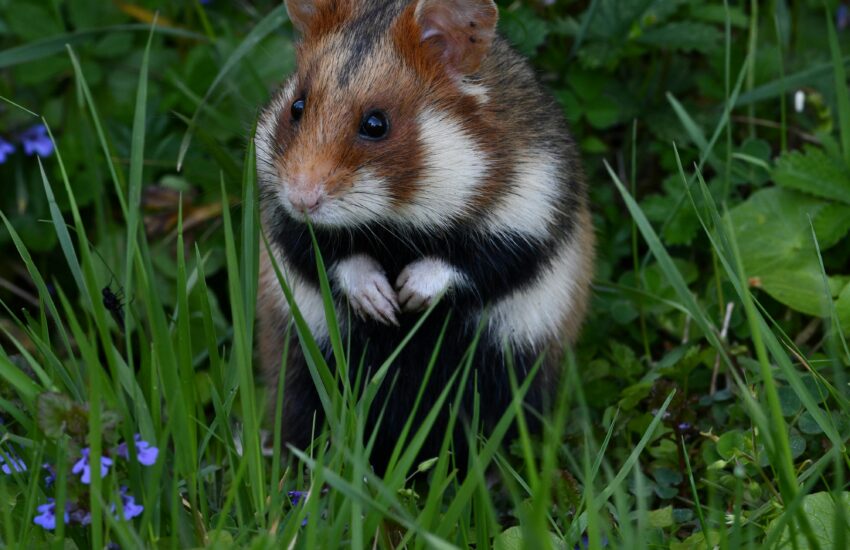Hamster Mating Behavior
Understanding Hamster Mating Rituals
Hamster mating behavior is a fascinating topic, especially for pet owners and those interested in animal behavior. During mating seasons, hamsters display a series of rituals that are essential for successful reproduction. Typically, the male hamster initiates the mating process through several behaviors including scent marking, vocalizations, and physical displays. Understanding these behaviors can help owners provide the best environment for their hamsters.

The Courtship Process
The courtship behavior of hamsters is particularly interesting as it includes a mixture of attraction and subtle aggression. The male hamster approaches the female and often engages in a sniffing ritual. He may engage in chasing behavior that can resemble play but is actually a part of the courtship rituals. If the female is receptive, she will exhibit a still posture known as lordosis, allowing mating to take place. Understanding this process helps in fostering a suitable atmosphere for breeding.
Signs of Estrus in Female Hamsters
<pRecognizing the signs of estrus (heat) in female hamsters is crucial for any breeder. Female hamsters can become receptive to mating approximately every four days, lasting around 12 hours. During this period, they often exhibit increased activity and may display unique vocalizations. Pet owners should observe their female hamsters closely, as the slight changes in behavior can be critical for breeding purposes.
Post-Mating Behaviors
After the mating process, both males and females may exhibit specific behaviors. The female may become territorial, showing signs of nesting and preparing a safe space for upcoming litters. Males, on the other hand, might display increased eagerness to return to the female for further mating opportunities. This cycle is part of the natural reproductive behavior of hamsters and is indicative of their instinctive parental and reproductive strategies.
Important Factors Influencing Mating Behavior
Several factors can impact hamster mating behavior, including environmental conditions, age, and social interactions. Understanding these factors is key for successful breeding and the overall health of your pet hamsters.
Environmental Considerations
The environment in which hamsters reside plays a significant role in their mating behavior. Factors such as temperature, light cycles, and habitat conditions can influence their reproductive cycles. For example, hamsters are more likely to mate during warmer months when the days are longer. Maintaining an optimal habitat is crucial for encouraging natural mating behaviors in pet hamsters.
Age and Maturity of Hamsters
Age also affects mating behavior, as young hamsters generally exhibit different mating tendencies compared to their older counterparts. Males typically reach sexual maturity at around six weeks, while females reach maturity a few weeks later. However, it’s essential to wait until they are fully grown, usually around four months, to ensure healthy matings and litters.
Social Interactions Among Hamsters
Social behaviors significantly influence how hamsters interact during the mating process. Introducing new hamsters to a social group requires careful observation, as aggression and stress can deter mating behavior. Owners are encouraged to introduce potential mates gradually, ensuring they understand the social dynamics at play. This consideration aids in smooth transitions during mating seasons.
The Role of Diet and Health
A balanced diet and good health are critical to the reproductive success of hamsters. Nutritional deficiencies can adversely affect their mating behavior, slowing reproductive rates, and impacting overall health.
Essentials of a Healthy Diet
Hamsters require a comprehensive diet that includes fresh fruits, vegetables, high-quality pellets, and occasional protein sources like mealworms. These nutrients play a vital role in maintaining reproductive health. Owners are encouraged to monitor food intake to ensure that their hamsters are getting a well-rounded diet that supports their mating behaviors and general well-being.
Health Monitoring Before Mating
Health checks should be a priority before considering breeding hamsters. Regular vet visits help identify diseases or conditions that may interfere with mating behaviors. Signs of illnesses such as respiratory infections or dental issues can dramatically affect hamster health and, ultimately, their ability to mate successfully. Maintaining good overall health should be a top priority.
Key Takeaways
- Hamster mating behavior includes courtship rituals and signs of estrus, which are critical for successful breeding.
- Environmental factors, age, and social dynamics significantly influence mating behaviors in hamsters.
- A healthy diet and regular health check-ups are essential for promoting reproductive success in hamsters.
- Monitoring behaviors during the mating process can help pet owners provide a safe environment for hamsters.
FAQ
1. What identifies breeding-ready female hamsters?
Breeding-ready female hamsters can be recognized by their increased activity and specific vocalizations during the estrus cycle. This period lasts about 12 hours and occurs every four days. Owners should be observant of their female hamsters to catch these key indicators.
2. Are there specific times of the year when hamsters mate more frequently?
Hamsters typically mate more frequently during warmer months, aligned with longer daylight hours. Environmental conditions significantly influence their reproductive cycles. Owners should be ready for mating during these peak times to ensure they provide appropriate habitats.
3. Can hamster mating behaviors be influenced by stress?
Yes, stress affects hamster mating behaviors. Hamsters placed in high-stress environments may become aggressive or overly withdrawn, impacting their mating opportunities. It’s essential to create a calm and secure environment to encourage mating behaviors.
4. How can diet impact hamster mating success?
A healthy, balanced diet supports reproductive health in hamsters. Nutritional deficiencies can hinder their ability to mate and successfully raise a litter. Hamster owners should focus on providing a comprehensive diet to promote overall health and reproductive success.
5. Is it possible to keep multiple males together during breeding?
Keeping multiple males together during breeding is not advisable due to potential aggressive behaviors among them. Male hamsters are territorial, and introducing them to females can lead to fighting, which can endanger their health and breeding chances. It’s best to introduce males individually during the mating process.
